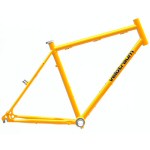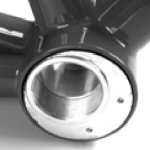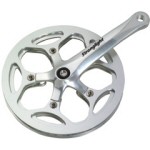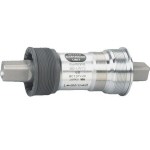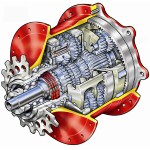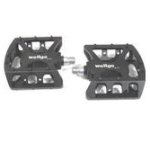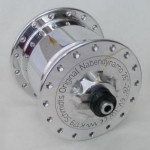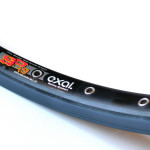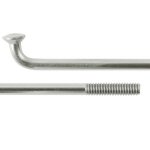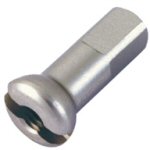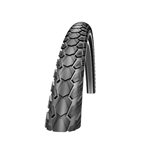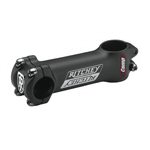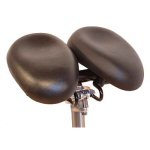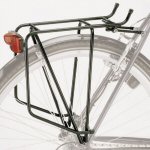1.)
Servicing
There shouldn’t be needed a lot of services on the bike, cause you are often occupied with your physic and mental power so there isn't a lot of time for big services. And furthermore it’s useless to carry a lot of oil and other fluids around for all the services you have to do. So, just keep it simple!
2.)
Frame material
It’s better to use a frame material which is easy to weld. So steel is the best choice. The only problem is that nowadays steel frames aren’t that good for welding, because the steel pipes have very thin wall thickness, around 0.6 to 0.8 mm and less. If it isn’t possible to find suitable welding equipment it is also possible soldering a support tube to the frame, well this is just possible if the frame breaks on a suitable position. Whatever my decision was a steel frame, cause it is easier to repair, but it needs a little more service then an aluminium frame. And also because I am able to use welding and soldering equipment I decided so.
3.)
Frame geometry:
There isn't to say that much for me, because the really important thing is that there are a lot of soldering parts for water bottles and for baggage carrier. And the frame height should be suitable for your body measurements.
4.)
Wheels:
The wheels are the most sensitive parts on the bike! The 26 inch wheels are even stronger then the bigger 28 inch wheels. And because “mountain bikes” are available all around the world it shouldn’t be a Problem to get a 26 inch wheel. The wheel distance (from wheel bearing to wheel bearing) should be as high as possible on such trekking bikes, cause its better if you have heavy baggage on board. (The shoes shouldn’t touch the baggage pockets during the ride.) Also your drive is even quieter and more comfortable and the bike isn't lurching that often/fast.
Another important point for a solid wheel is how many spokes it has. A good number is 36 spokes, because I have a “Rohloff” back hub I have to take 32 spokes but if the “Rohloff” back hub will be available in a 36 spoke version I would prefer it. 32 spoke wheels are used in mountain bikes, because there the reason is weight saving, but the price is always a stabilisation loss
5.)
Seating position:
A straight seat position is even better especially if you ride your bike the whole day. Therefore the bar end should have a higher position then on a racing bike. So a special end bar is needed (watch my bike).
6.) Tire:
On European streets which are in good condition you can still use 1 inch tires. But as soon as you walk on African or Asian streets or simply off-road on mud and sand lanes you better take at least 1.9 inch tires. Such broad tires have not only the advantage that they have a longer life time, and a better grip to the ground, they also have a little better suspension. A good tire for a "around the world" adventure should be come along with all kinds of streets/slopes. So it should have good sliding attributes on asphalt streets as well as a good traction on slopes. So not only the 1.9 inch is the solution also the profile should be suitable for this requirements. Such a tire is the so called Marathon XR produced by Schwalbe. There is also a foldable version of this tire out, so it is also a spare part which I take on this adventure.
7.) Chain:
A good chain should have a life time for around 5000 kilometres. I am driving with the very rugged SLT 99 MTB produced by Rohloff. On big tours I am driving with two chains, which I am changing every 1000 kilometres. So I am able to get higher life times (around two times) out of my chain rings, which die even faster if using them on a worn out chain.
|
8.) Chain rings:
The lifetime of chain rings depends on the chain (see above). Ok but there are a few things which are important too! It is a big advantage to have a wide range of gears. Especially the lowest gear should be really low enough! Slow driving with your bike (which has around 40 to 50 kg) is even easier then hustling it the whole way! Ok, the lifetime of your chain rings also depends on the frequency you change your gears (on classic gear switching systems). So this is why I prefer a hub switch like the “Rohloff Speedhub”. The reason why this is much better is because the chain isn’t changing that often, so it isn’t wearing out that fast. Well a steel chain ring would be much better, but you can hardly get these rings nowadays. This is why alloy milled rings are even much easier to produce.
9.)
Pedals
They should be big enough, so you have enough space for your trekking shoes on it. I also prefer pedals with chopping and straps which allow you a similar round tread like it is possible with all those click pedals. Especially on mountain tracks this is a big advantage.
10.)
Hand bar
Like the saddle a very personally thing. I never would bike away with a straight bar. At least the hand bar should have two grip positions! So I decided myself for a straight bar, which has special bar end to get another grip position. This bar ends offers a higher grip position, which is important for an upright sitting position.
11.)
Rear view mirror
If there is a lot of traffic this part is essential! For example in big cities or on main transport roads (Do you know the holy Road trains in America and Australia?). It is much better then turning around your head during your ride, which can be very dangerous!
12.)
Bike computer
Well it is not only fine to see how many kilometres you have taken a day. It is also needed for navigation. There are some good described tracks out in the WWW which includes kilometre tables. Well also important is an altimeter, but its much better if this is a separate part! A bike computer can be stolen very easy, and because bike computers with an altimeter are quiet expensive its better to take a cheaper one without.
13.)
Suspension?
Nowadays there are trekking bikes out, which have a suspension fork. These forks are also useable with baggage carriers, so it is possible to use them. But I think the only reason to use such a fork will be on very bad streets like on mountain tracks. For such a long tour these parts are not the best option! Every moving part is increasing the risk of a break down. And so I decided to take a fixed fork.
14.)
Brakes
There are tow kinds of brakes nowadays techniques offering you. On the one hand you can have disc brakes and on the other hand you can have classic rim brakes. I would mind disc brakes cause there are further spare parts needed, the only advantage is, that the abrasion of the rims isn’t that high. These two systems mentioned before you can have in a hydraulic variety. Well I prefer such a hydraulic system because there is no abrasion like you have in those cable winch systems. My hydraulic brake producer has a worldwide service network, which is a real advantage (Magura).
15.)
Light
I often see touring bikes equipped with a lighting system. But the question is why? On a large number of my tours I was biking by sunlight, so I can’t see the reason having something like this. Another problem is that such lighting systems are counting to the first few things getting destroyed during such a long journey. A head lamp would be enough for a dark tunnel or anything else! Just a few back lights would be a good thing, but it is enough if they have a few batteries inside. My head lamp has 4 AA (Mignon) batteries and is lasting for 50 hours non-stop.
16.) Baggage carrier
Together with the wheels these parts are the most important on your bike. I have seen a lot of people around repaired their baggage carrier on a really adventure like way. So its better you spend money on them, cause this money will be invested right! The best material for a Baggage carrier is definitely steel, because this material can be repaired. My choice was the Tubus "Cargo" and "Tara", because they have a good price/quality ratio.
17.) Saddle
Well no other part on the bike is that personally like the saddle. Here everyone have to find his/her own suitable stuff. For my part I decided for a not widely used solution. Cause my saddle has an really strange shape. Have a look on the Easyseat by SQ-Lab @ http://www.dersattel.de. Well I just wish there will be out a more rugged kind of this seat but it is still the best saddle I ever had!
|
